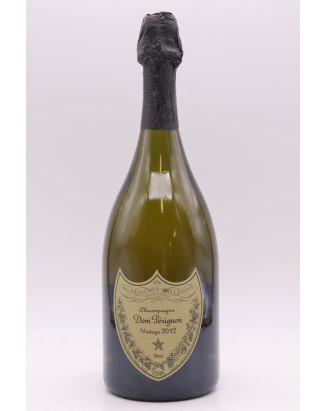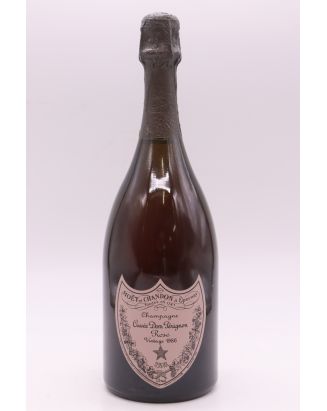








Dom Pérignon takes its name from the famous Benedictine monk Pierre Pérignon, often regarded as the "spiritual father" of champagne. Born in 1638, Dom Pierre Pérignon moved to Hautvillers Abbey in the Champagne region in 1668, where he set about creating the "best wine in the world". His innovative approach to blending grapes and his passion for winemaking left their mark on the history of Champagne viticulture. Although he did not actually invent sparkling champagne, his contributions to the quality of the wines produced in the region have left an indelible mark.
Legend has it that it was he who perfected the champagne method by hermetically sealing bottles of white wine with beeswax, thus triggering a second fermentation and giving rise to the effervescence so characteristic of champagne. This myth was largely perpetuated by Moët & Chandon, which acquired Hautvillers Abbey in 1823 and, in 1936, launched the first Dom Pérignon cuvée, vintage 1921. Since then, less than 50 vintages have been produced, all marked by unrivalled quality standards.
Today, Dom Pérignon belongs to the prestigious luxury group LVMH, which continues to keep the legend alive while perpetuating the excellence and worldwide renown of the house.
The production of Dom Pérignon champagnes is based on a rigorous selection of the best vintages in the Champagne region. The grapes come exclusively from vineyards classified as Grands Crus, as well as the famous Premier Cru of Hautvillers Abbey. With a total surface area of over 1,200 hectares, these vineyards are spread over prestigious terroirs such as the Montagne de Reims, the Côte des Blancs and the Vallée de la Marne.
The secret of Dom Pérignon champagnes lies in the perfect mastery of grape variety blending. Pinot Noir and Chardonnay, two emblematic grape varieties of the Champagne region, are combined to create a perfect balance between structure and freshness, aromatic complexity and finesse.
This rigorous approach enables Dom Pérignon to produce champagnes of great complexity, capable of ageing gracefully for decades.
Vinification at Dom Pérignon is a meticulous process, which emphasises respect for the terroir and the character of each vintage. Unlike other Champagne houses, Dom Pérignon only produces vintage champagnes, i.e. champagnes from a single harvest year.
Fermentation takes place in stainless steel vats to preserve the freshness and purity of the aromas. Once bottled, the cuvée undergoes a long ageing process on its lees, lasting at least eight years for the Vintage cuvées, and up to 25 years for the Plénitude 3 (P3) cuvées. This slow, delicate process allows the wine to develop complex aromas while retaining great freshness.
Cellar Master Vincent Chaperon, who succeeds Richard Geoffroy in 2019, is careful to respect this tradition of excellence. He has no hesitation in not declaring a vintage if the quality of the harvest does not meet the standards demanded by the House. Only the best grapes are selected to produce exceptional champagnes, imbued with lightness, richness and elegance.
The House of Dom Pérignon offers several emblematic cuvées, each representing the expression of a unique vintage and incomparable expertise:
Dom Pérignon Vintage: Dom Pérignon's classic cuvée, made from the best grapes of the year. This champagne embodies the house's timeless style, with floral notes, ripe fruit and a distinctive minerality. It is released approximately nine years after the harvest.
Dom Pérignon Rosé Vintage: First created in 1959, this cuvée combines the elegance of chardonnay with the power of pinot noir. This rosé champagne is marked by its depth and complexity, offering aromas of red fruit and a silky texture.
Dom Pérignon Plénitude 2 (P2): This cuvée is the result of 12 to 15 years of extended cellar ageing. It reveals an extra dimension of richness and intensity, with brioche and toasty aromas and vibrant freshness.
Dom Pérignon Plénitude 3 (P3): The pinnacle of Dom Pérignon's art of ageing, this rare cuvée is offered after around 25 years of maturation. P3 champagnes offer unrivalled depth, with complex aromas and a dense structure, while retaining a remarkable liveliness.
Dom Pérignon vintages are synonymous with excellence and rarity. Since the first vintage in 1921, each production year has been carefully selected according to the quality of the harvest. Among the most remarkable vintages to discover are:
Dom Pérignon 1961: A vintage of anthology, tasted by John F. Kennedy and Charles de Gaulle at an official dinner in 1961.
Dom Pérignon 2002: Renowned for its richness and balance, this vintage is considered one of the best of recent decades.
Dom Pérignon 2008: A vintage of great freshness and intensity, embodying the quintessential Dom Pérignon style.
Dom Pérignon Rosé 2009: This rosé champagne captivates with its complexity and exceptional mouthfeel. Other notable vintages include 1975, 1982, 1995, 1996, 2000, 2004, and more recently, 2012 and 2013.
Champagne lovers can also explore other prestigious houses in the region, such as Ruinart, Krug, Veuve Clicquot, Salon, Moet & Chandon, or Taittinger, which share the champagne excellence and offer unique experiences.
Dom Pérignon embodies the essence of luxury champagne, combining tradition, innovation and excellence. Each cuvée is a work of art, the result of unrivalled expertise and a constant quest for perfection. Whether to celebrate a special moment or to enrich a cellar, Dom Pérignon champagnes offer a unique sensory experience that spans the decades while retaining their freshness and elegance.